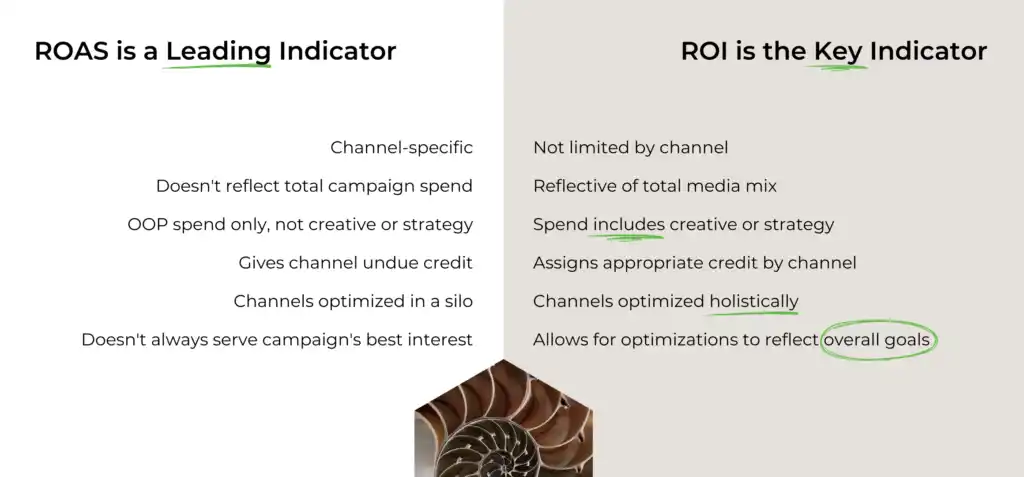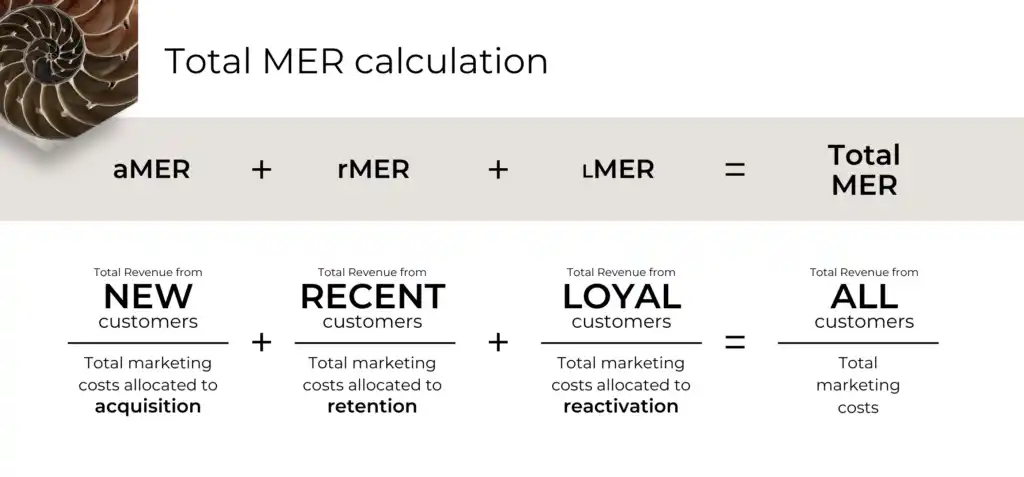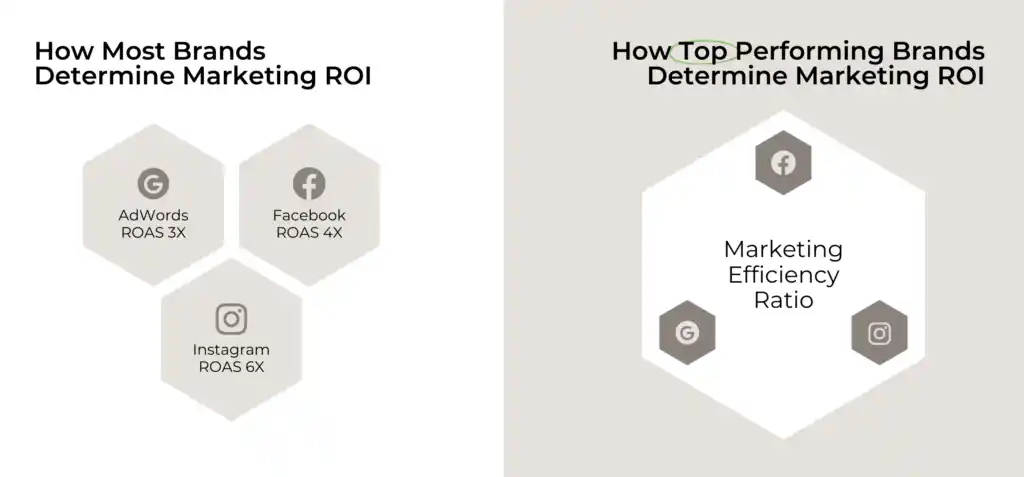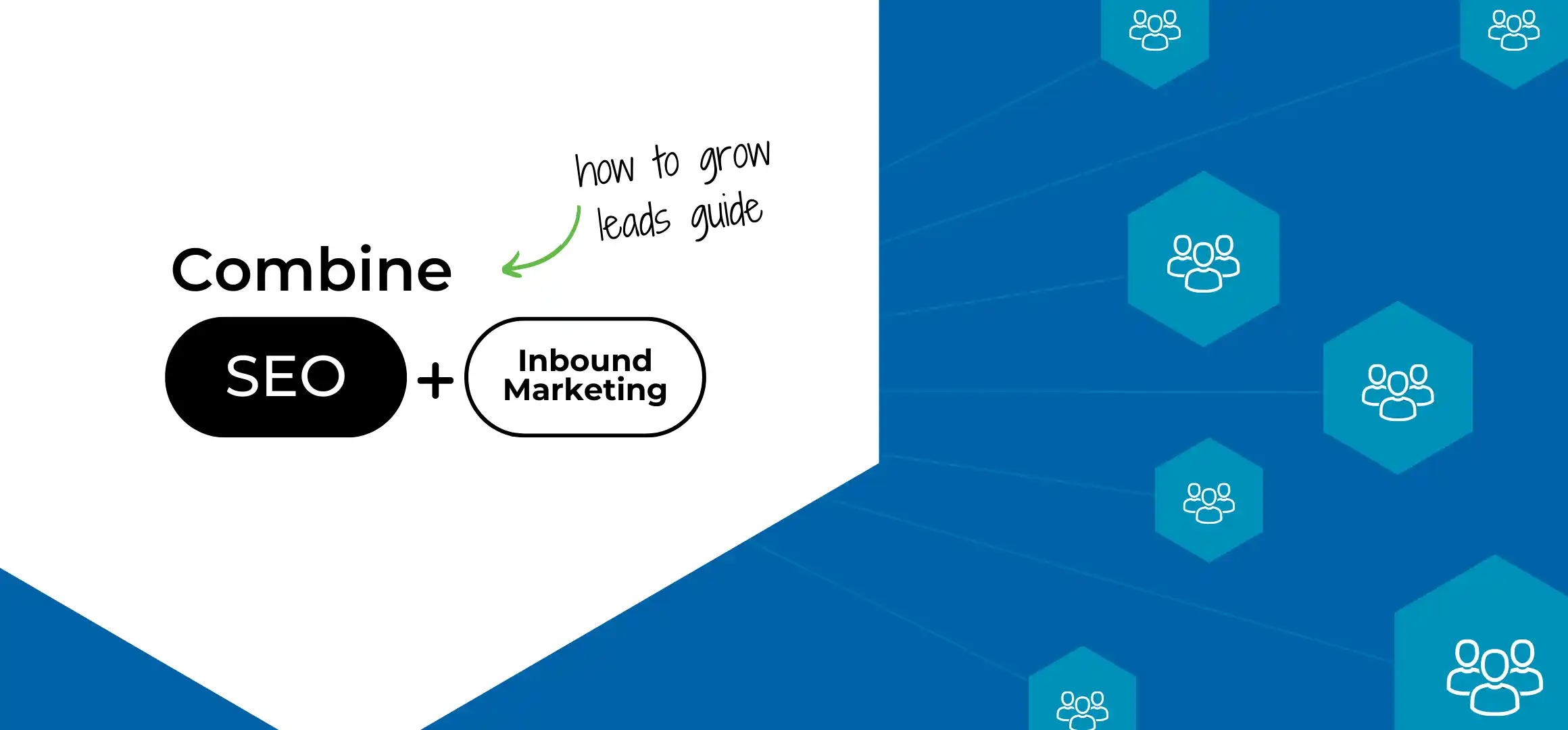
What does MER stand for in marketing?
MER (marketing efficiency ratio) is a metric used to analyze how effectively your marketing spend is generating revenue.
A higher MER confirms that you’re generating more revenue from marketing efforts, while a lower MER indicates a lack of sufficient ROI.
The goal of this ratio is to identify marketing optimization opportunities, such as adjusting audience targets or modifying individual tactics across marketing channels.
FYI: Marketing efficiency ratio (MER) and media efficiency ratio (MER) are often used interchangeably, but actually focus on different aspects of performance. Marketing efficiency ratio measures the effectiveness of overall marketing investments in generating revenue, while media efficiency ratio evaluates how media spending is generating revenue.
Do brands really need to measure and optimize MER?
Most people assess their digital marketing strategy’s effectiveness by looking at return on ad spend (ROAS), but overlook the fact that ROAS’ value begins and ends with telling you what’s happening in a single channel alone.
Paid media is (should be) driving business, but combining your AdWords ROAS + Facebook ROAS + ROAS of whatever else, is still not your true ROI.
Marketing ROI cannot be calculated by looking at ad spend alone.
An accurate ROI calculation requires the inclusion of things like labor costs and other associated resources that support your marketing campaigns.
For a full picture of total channel performance (and the infrastructure that maintains those channels), we need to use the Marketing Efficiency Ratio (MER).

And within the overall MER category, there are sub-categories that align to the three primary customer segments:
- Acquisition – net new customers
- Retention – recent customers
- Loyalty – long-time customers

How to calculate marketing efficiency ratio
Step 1: Add up all of the costs associated with your marketing budget, including:
- Advertising costs (paid media, paid search, etc)
- Total sales promotion expenses (discounts, coupons, free samples, etc)
- Public relations costs (events, press releases, sponsorships, etc)
- Other marketing expenses (market research, brand development, etc)
- Technical optimizations (web development, technical SEO improvements, etc)
Step 2: Calculate your revenue generated from marketing activities
Determining how much revenue can be attributed to marketing can be tricky. You may need to use statistical models or other methods to determine marketing’s true revenue impact.
Once you have determined your total marketing expenses and your revenue generated from marketing activities, arrive at your MER by dividing total marketing expenses by revenue generated from marketing.
MER = Total Marketing Expenses / Revenue Generated from Marketing Activities
For example, if your total marketing expenses are $100,000 and revenue generated from those activities is $500,000, your MER would be 5.0 (5X in ROAS parlance, or 5:1 expressed as ROI.)
Alternatively, if you want to calculate the gross margin ratio, you’ll need to divide gross margin by total marketing expenses.
What is a good marketing efficiency ratio?
To be truly performance-driven, a “good” MER needs to be determined ahead of time so that you know what you’re trying to optimize toward.
There are established benchmarks for some eCommerce verticals, but most people are still catching onto what MER offers. As awareness and use of this ratio expands, we expect to see benchmarks identified across all industries and niches.
Generally, you want to aim for a MER that’s higher than 1, which demonstrates that the revenue generated from marketing activities is greater than the cost of those activities.
Marketing efficiency examples
MER is most frequently seen in the eCommerce landscape, although more B2B brands are starting to implement it. In those cases, efficiency is based on lead acquisition and client/customer conversion.
The measurement takes a longer time in B2B because of the longer sales cycle, but MER is certainly applicable and highly useful for B2B brands who want the fullest marketing ROI picture possible.

Here’s an example from an eCommerce client-partner we’ve supported with MER:
A high-end eCommerce brand wanted to focus on new customer acquisition while shifting from growth mode to profitability mode.
The problem? New customers aren’t the most profitable, at first.
Net new customers are a long-term growth strategy. Their initial AOV is not as high as existing/returning customers.

Do eCommerce brands need to invest in net new customers? Absolutely. Will that drive the highest possible short-term revenue? Nope.
Based on our client-partner’s profitability goal, we recommended a MER marketing plan that blended the three primary customer segments across three acquisition channels:
- Net new customers
- Existing customers
- Reactivation of lapsed customers
This ensured we were optimizing campaigns in a way that drove profitability (cash in hand right now) whereas growth mode requires patience before you reap the rewards.

“Apiary Digital has been an incredible partner as we’ve pivoted from top-line growth to profitability – providing strategic budget and creative recommendations to achieve our goals.
By breaking customer groups into segments based on recency and frequency of purchases, we were able to acquire enough net new customers to continue to grow profitably, while increasing revenue from our existing loyal customer base.”
— Taylor Hansen, Apiary Consultant-Partner & Fractional CMO of Grass Roots Farmers Co-op
TL;DR on Marketing Efficiency Ratio (MER)
- Marketing ROI can’t be determined by looking primarily at ROAS per channel. This is why you need MER.
- Marketing efficiency ratio (MER) measures the overall efficiency of your entire marketing ecosystem.
- Media efficiency ratio (also MER) measures the efficiency of media spending alone.
- Marketing efficiency ratio is calculated by dividing total marketing expenses by total revenue generated via marketing activity.
- B2B brands can and do utilize MER to gauge the most accurate marketing ROI picture, but the measurement takes longer due to the longer sales cycles typical in the B2B world.
- Any eCommerce brand drawing ROI conclusions without MER is in danger of making flawed performance decisions.




